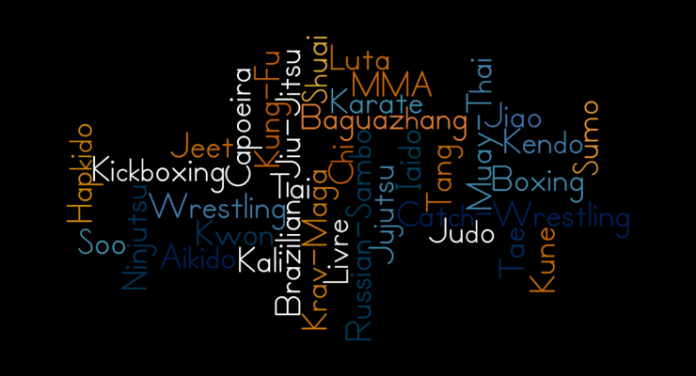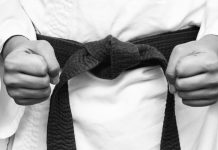Seeking training in a second (or third or fourth) martial art is not a novel concept. Monks at the legendary Shaolin temple often traded techniques and strategies with each other and with visitors to the temple, and many Baguazhang and Hsing I practitioners complete their training by learning each others’ respective styles.
More recently, Bruce Lee gained fame for encouraging martial artists to explore other styles and “absorb what is useful” from them, and many Gracie jujitsu fighters (including some members of the Gracie family) augment their formidable grappling and groundfighting skills by training in such striking arts as boxing and Muay Thai. Indeed, the rise in popularity of no holds barred (NHB) and mixed martial arts (MMA) full-contact competitions, largely revitalized in the 20th century by the Gracies, has made cross training an increasingly common strategy.
Here are some things to consider when considering whether or not to start training in another style and how to go about doing so.
Are you justifiably dissatisfied with your current style?
Maybe you’re seeking additional training because you’ve become frustrated and disillusioned with your current style and want to dump it for something new. Perhaps wing chun isn’t as cool as you thought it would be, or maybe training in shotokan karate hasn’t made you the ultimate fighter that you thought it would. While your concerns might be valid, you should consider whether you’ve given your style enough of a chance. For all but the most gifted, it takes at least three years of regular, faithful training to learn most or all of the techniques of any style, acquire the ability to perform them fluidly and beautifully, and develop the presence and reflexes needed to apply them in a real fight. It will take even longer to learn the techniques well enough to confidently take on a seasoned streetfighter or a well-trained martial artist from another style. Hey, nobody ever said learning this would be easy. (If someone did tell you this, he was lying.)
So if you’ve only been taking classes for half a year or even a year or two, you owe it to yourself to consider whether or not you’ve really given your first art a chance. And even if you’ve been around for a few years, can you truly say you’ve given your training the commitment it deserves? I’m talking about at least two to three classes a week on average, plus regular practice at home. I’m also talking about whether you’ve really been concentrating in class, or whether you’ve just been putting in face time or socializing. If not, maybe the fault lies in you, and not in the art or your teacher or the school.
But let’s say you’ve put in time and effort, and you’re still not happy. Ask yourself if you’re truly dissatisfied or if you’re just frustrated at the slow rate of improvement. Can you see progress in yourself? Can you see the possibility that, someday, the art will give you what you want? If so, then why waste all the time you’ve already invested in it? You might be missing out on something great if you quit now. It’s hard to predict a good learning curve in the martial arts, but it is seldom a steep linear function of time. In some styles, students tend to pick up the basics very quickly, but find that their progress then slows because expert proficiency is far harder to achieve. Conversely, in other arts, it can take many years of fumbling around before the basics can be mastered, but after that, progress comes relatively quickly. Still others test students’ patience, as progress seems to come in unpredictable spurts and plateaus. If you’re feeling frustrated about your progress, talk to your teacher; he or she can help you focus your training and ensure that you’re on the right track.
It might seem like I don’t advise switching styles or augmenting your training, but that’s not true at all. It’s not uncommon for a beginner to choose the wrong style because he didn’t know what he wanted out of his training or because her interests in learning a martial art have changed. Also, there are a LOT of bad teachers out there, and it can take a while for this fact to make itself obvious. I certainly don’t recommend wasting your time in an inappropriate learning environment, and of course, for those who are training to be a truly complete fighter, cross training is essential. But I’ve seen a lot of people switching schools and styles simply because they expected instant gratification and constant fun and were thus unprepared for the commitment, discipline, and hard work required to learn a martial discipline.
Whether to train two styles simultaneously
Let’s say you’ve carefully considered all the things we discussed above. You’re sure that you want to learn a second style for the right reasons and are in fact ready for the move. There’s still a right way and time to do so.
The first thing you need to decide is whether or not you want to continue learning your original style at the same time you add another style in. Many teachers frown upon the practice of learning multiple styles at once, and they have some valid reasons for doing so. Firstly, learning two styles at once means, obviously, that you’ll be dividing your focus, attention, and training time in two and halving your rate of progress in each style.
But training two systems simultaneously won’t just slow your progress in each style; it can actively worsen your skill in each style. A martial art isn’t merely a collection of blocks, throws, kicks, and punches; it’s an entire system – a philosophy, if you will – of body mechanics that governs balance, body mobility, and power generation. Each system’s body mechanics are designed to maximize the strengths of that system while minimizing the weaknesses. Beyond mere techniques, these are the things that must be drilled until they become reflexive and automatic. If you’re trying to learn two systems at once, you’re essentially trying to create two conflicting sets of reflexes for balance, for power, and for mobility, and our bodies were simply not wired to do this. Thus, there is a danger that neither set of body mechanics ever becomes reflexive.
For example, your wing chun teacher might teach you to put most of your weight on your heels and on your rear leg, while, in your muay thai class, your instructor is telling you to stay on the balls of your feet and distribute your weight between both legs evenly. Who’s right? They both are. Wing chun is a close range art. Wing chun fighters believe in driving forward, closing the gap, and pressuring their opponents; this negates the danger from most kicking attacks and allows practitioners to control their opponents’ limbs, break their opponents’ stance and base of power, and use their contact reflexes to jam attacks and unleash a rapid-fire succession of short-range power attacks that are extremely difficult to defend. Thus, your wing chun teacher advises a stance and weight distribution that helps you drive forward quickly, safely, and with power. Muay Thai kickboxers fight differently. They want to be able to quickly launch kicking attacks with either leg, and require instant, multidirectional mobility to avoid attacks. They need to be able to move in and out quickly. A Thai boxer’s footwork thus provides him with the ability to do these things.
Having said this, many accomplished martial artists train two or more styles at the same time. If you’ll be competing NHB or MMA, it’s almost a given that you’ll need to do so in order to become a well-rounded fighter that can handle anything your opponents throw at you. Although a lot of teachers will tell you that their style is a “complete” system that incorporates striking, kicking, throws, grappling and joint locks, it is – in my personal experience – rarely true. The school might teach a wide range of techniques, but there are always one or two areas that the style specializes in; in all the others, the style is sadly weakened. For instance, although many wing chun schools claim that wing chun incorporates kicks, joint locks, and grappling defenses, the truth is that wing chun focuses on hand strikes, close-range body control, and trapping. The rest of it isn’t too bad, but if you really want to kick or grapple or throw at a high level, you’ll need to go elsewhere. Similarly, a karate school might teach a few throws, traps and ground techniques, but you’ll basically be learning punches, blocks and kicks. Even jiujitsu schools, which tend to have a very balanced curriculum, tend to emphasize one aspect over another, simply because the head instructor is naturally gifted in one area and favors it for his own reasons.
Even if you’re not planning on NHB, MMA, or even streetfighting, it might be a good idea to augment your training simply to get the most out of your martial arts experience. People tend to train the arts for one of five general reasons: to get fit, learn about a philosophy or culture, prepare for self-defense or combat, acquire peace of mind or mental discipline, or to find another venue to indulge their competitive instincts. They are all valid reasons (to be addressed in a later article), but no school truly offers all these benefits, at least not at a high level. For instance, though training Brazilian jiujitsu might offer great competition opportunities and self-defense/combat benefits, there isn’t much culture being taught there, and you won’t find a way to peace of mind or mental discipline just by going to a BJJ class. Likewise, though taiji classes might give you a way to learn about Taoism and Chinese philosophy and are good for your health, chances are, you won’t get much self-defense knowledge out of it. (Taijiquan also won’t help you lose weight or get fit in a Western sense either.)
Making your move
OK. So you’re truly ready to start learning a new style. How do you go about doing so?
Crosstraining As I mentioned earlier, most fighters agree that if you’re going to train in two styles simultaneously, you should be extremely proficient at your first art already – at a black belt level (or, equivalently, about three years of hard training) at least. Your moves in your first style should be so reflexive and smooth, you can do them correctly even while half asleep or drunk. It is only at this point that a fighter is ready to add a new system – and an entirely different set of reflexes – into his personal style.
There are two important things you must remember to do when adding a new style to your training regimen. Firstly, be honest to both teachers. Tell them both that you’re also training at a different school, and ask them if this will be a problem. Most teachers with a healthy ego and confidence in their skills won’t mind that you’re also taking lessons elsewhere, as long as you tell them. Just about every teacher I’ve studied with actually encouraged me to go see what else is out there. Many of my teachers study other styles on their own time.
But some teachers will not teach a student who is training elsewhere, and their reasons vary. It might simply be a matter of vanity, and while you might think this is a silly reason, it’s his or her prerogative. Other feel that your extracurricular training will distract you from whatever she’s trying to teach you and might ask that you postpone your training for a while until your body is ready for it. And for some teachers, it’s a matter of loyalty; the teacher-student relationship in some traditional Asian schools can sometimes become resemble a friend-to-friend or parent-child relationship, so going to another school might be seen as a personal rejection. Again, you might not agree with this, but your teacher still has a right to know.
And don’t think about going behind his or her back, either. Don’t cheat. Why? Because, to paraphrase comedian Chris Rock, he’s gonna find out. The martial arts community in the West is relatively small, and chances are, a martial-arts teacher in a given community knows, or knows of, most other martial-arts teachers in the area. In society, they say everyone is linked by “six degrees of separation.” Well, in the martial-arts community, it’s more like two degrees of separation. And martial-arts enthusiasts are notorious gossips. So trying to hide something like this from a teacher is futile and a bad idea; sooner or later one or both teachers find out that you’ve been lying, and you’ll never get any decent instruction from either of them ever again. (That’s assuming they don’t kick you out of their schools.)
The second thing to remember when you start training a second style is to “empty your cup.” I’m referring to an old Taoist story about a student in China who once went to a famous Taoist philosopher to learn from him. As the master began to explain the core of his teachings, the student would frequently interrupt, saying things like, “Yes, we teach that at our school,” or “Oh, my other teacher believes differently.” Finally, the teacher stopped talking and offered the student some tea, and the student accepted. As the teacher filled the student’s cup with tea, he kept pouring until it was overflowing, forming a puddle on the table and spilling onto the ground. The student cried, “Stop pouring! Can’t you see the cup is already full?” To which the teacher replied, “I see. And how can you taste my cup of tea unless you empty your cup first?”
This might seem obvious. But I’ve seen a lot of students forget this maxim. Every time the teacher explains something, he nods knowingly with a smug attitude, or quietly scoffs away in disagreement. When the student is training with other students, he does things the way he learned at his first school instead of the way the teacher is teaching it. And when he spars with his fellow beginners, he’ll use techniques and skills from his previous training to beat his training partner for a vicarious empty thrill. Such a student will never derive the benefits from training a second style, because he isn’t actually trying to learn it. All he’s doing is deluding himself, inflating his ego, disrupting other students’ ability to learn, and insulting both his teachers.
So, in a nutshell: Don’t do that. Empty your cup.
Starting fresh It is much simpler to start at a new school if you’ve decided to leave your old one behind. The two requirements here are to empty your cup, and to be courteous. This means that you talk to your old teacher before you go instead of just disappearing without a trace. Thank her for taking the time to teach you, and explain that what you’re learning in his school isn’t for you. You can keep it short and sweet and vague, but at least do that much. It’s just courtesy.
Every martial-arts student has his own path to take. Crosstraining can be very enjoyable and help you acquire a great range pf practical applicable skills in a relatively short time. But there are many fine masters who have spent their entire lives training and refining their skills in one style, and they readily admit that they still feel they have much to learn. There’s nothing wrong with being a specialist.
What I’ve tried to do in this article is provide you, the reader, with a sound basis for deciding which is right for you.










